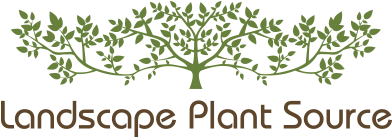How to choose plants for your garden.
Choosing plants for your garden is a fun process. If you’re a garden pro, then proceed to our SHOP page. You’ll find useful filters to help you narrow your search for the perfect plant. If you’re new to gardening, then here are a few tips to help you succeed.
First, get to know your site conditions. Successful gardens use plants that are well-suited to the region. To make good choices, it’s helpful to know what kind of sun you have (full sun, full shade, or something in between), your climate zone, and how much irrigation will be available.
Once you know your site conditions, it’s easier to choose plants that will fit your needs. From there, you can begin to narrow your selections based on flower color, foliage color, size, edible fruit, etc.
How to determine your climate zone so your plants thrive.
To select plants that will thrive in your region, it’s vital to match them to your geographic climate zone.
Two great resources for understanding your climate are the Sunset Climate Zones created by Sunset Magazine, and the USDA Plant Hardiness Zones created by the U.S. Department of Agriculture.
Knowing your area’s climate zone and landscaping with that in mind will improve your level of success with your plants.
Selecting a style for your garden.
Your house, the space you have to work with, soil type, climate, sun—and most importantly—your design aesthetic and interests all come into play when designing your garden. Click here to learn about some garden types to consider in your planning stage.
The types of plants we grow.
Bamboo is technically a grass but usually grows to tree-like size in height and circumference. It is often used as a buffer or highlight in gardens.
Cacti are a type of succulent plant that come in many different shapes and sizes. They often have spines, and have evolved to survive intense heat with little water.
Conifers are trees and shrubs that produce cones and have needle-like or scale-like leaves. Most varieties are evergreen.
Edible plants are grown for the fruits, seeds, flowers, leaves, or other parts that can be eaten raw or used in cooking.
Ferns have distinct foliage and reproduce by spreading spores, rather than flowering.
Grasses are present in nearly all habitats, from marshes to prairies. Ornamental grasses come in many colors and provide movement in the landscape.
Groundcovers include any number of low-growing ornamental plants that creep or spread across an area. They usually require minimal maintenance.
Perennials are longer-lived flowering plants that return each year, living for at least 2 years or more.
Shrubs are typically multi-stemmed plants that come in many shapes and sizes. Some shrubs stay small and round, while others grow more upright like a small tree. Certain shrubs can be shaped to create privacy hedges.
Succulents are plants that store water, such as cacti, aloes, agaves, and echeverias. They are easy to grow and thrive in dry environments.
Common nursery plant forms.
We use plant forms to describe how a plant has been grown in our nursery. Here are some common nursery plant forms explained.
Many bush/multi plants are also available in standard form, so be sure to check the form when you add plants to your cart.
Choosing the right number of plants for your garden.
To determine how many plants you need, you should consider the overall space you have to work with and the mature height and width of each plant. If you haven’t already, take some basic measurements of your planting space. To find out how large your plants will get once they’re fully grown, look up their mature size on the Details tab of each product page.
Begin mapping out where trees and plants will go, leaving enough room for them to reach their full size. For example, if you are planting shrubs that will reach three feet wide at maturity, then leave one-and-a-half feet of free space around each shrub for it to grow in all directions. Also, be sure to consider the space above your plants. You don’t want to impede their growth vertically either. Using this strategy you can determine how many plants will fit in your space.
Planting too closely can create poor air circulation, inviting pests and other problems. It also increases the need for regular pruning, which could be avoided by proper spacing.
If you want a full look, you might decide to plant a bit more closely. Keep in mind that as your plants mature, you may need to remove some of them to provide adequate space for those left.
You may also decide to use larger, more mature plants for instant fullness. We sell a wide variety of 15 gallon and 24″ boxed trees and shrubs that provide maturity to a new garden.
